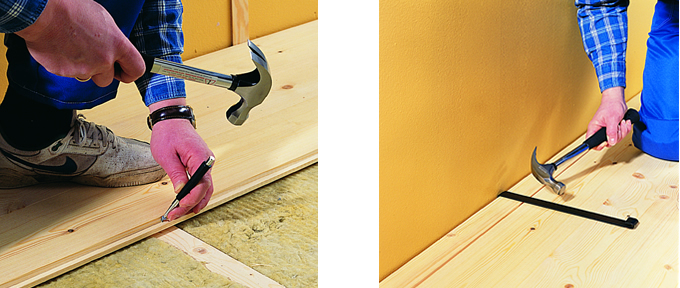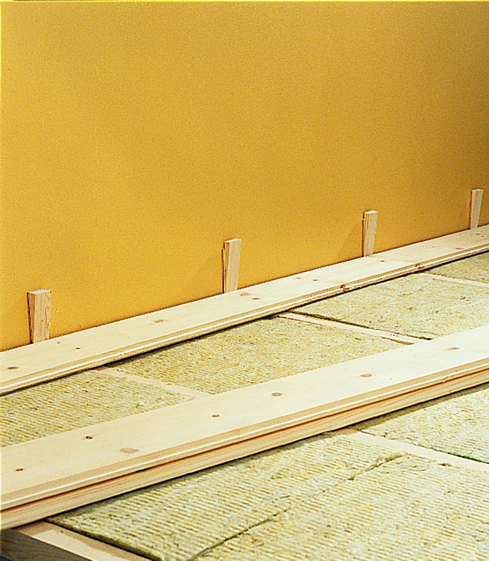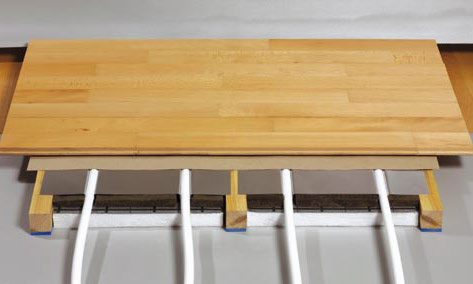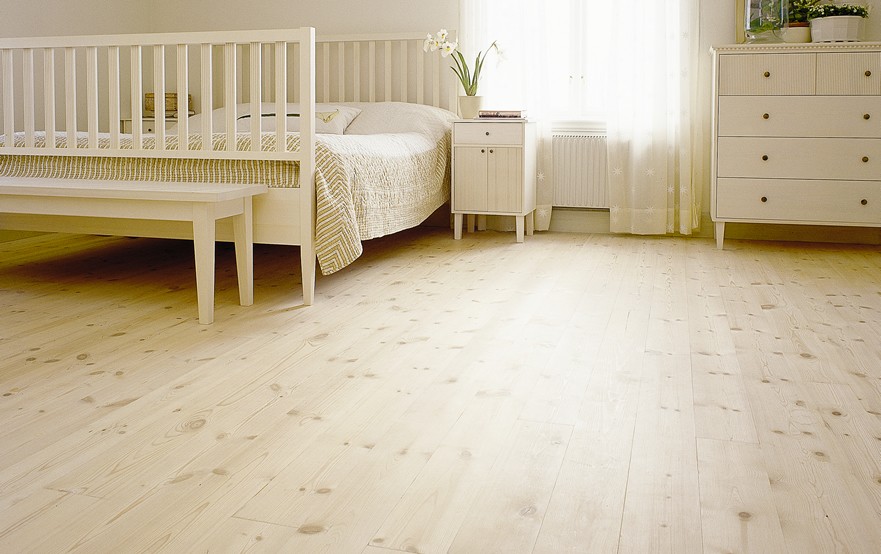Wood Flooring
TOPIC CHECKLIST
- Is it a structural or decorative floor?
- How much wear will it be subject to?
- What changes in humidity will it be subject to?
- Does it have the correct moisture content?
- Have you acclimatized it to the building?
- Have you left sufficient movement gaps?
What are the main types of wood flooring?
Solid wood structural
Square-edge softwood boards, fixed to support battens with nails or screws. The gaps between the boards will change with changes in moisture. They are normally covered by another material, but sometimes used for a rustic look. Use normal trade stock.
Solid wood decorative
Softwood or hardwood tongue and groove boards. They can be secret-nailed (fixed), clipped (floating) or stuck directly to the sub-floor. The boards must be kiln-dried to 8-10% moisture content.
Engineered
Engineered/laminated flooring is more stable than solid wood flooring, as it is made from a solid wood layer bonded to an engineered core, such as plywood. Often recommended for use with underfloor heating, or for areas subject to extreme moisture changes, such as kitchens and bathrooms.
Most engineered wood flooring is now designed with a click system that makes installation simple. Use the manufacturer’s recommended underlay.
Parquet
Use directly over a continuous supporting surface, such as a base of concrete, wood or plywood.
Before you begin
- Allow the wood to stabilise to the room’s moisture conditions for at least 24hrs (48hrs for hardwood) before fixing
- For installations over underfloor heating, ensure the moisture content of the boards is between 6% and 8% at the time of laying
- Ensure that any cement sub-floors register a relative humidity (RH) reading of no higher than 75% (65% or less for underfloor heating installations or for floors intended as stick-down installations) when tested with a hygrometer
- Ensure all wet trades (plasterwork, screeds etc.) have had time to dry out fully before installing the floor

Choosing the right species for your job
For most domestic use, any species with a medium or small movement will be fine. For commercial use or for areas with heavy traffic, choose a species with high wear resistance.
For underfloor heating, or for areas subject to extreme moisture changes, choose low movement species or engineered flooring (refer to manufacturer’s guidelines).
Board thickness
When fixing boards to support battens or joists, choose a thickness of board appropriate to the span of the batten or joist to avoid deflection and squeaking.
| MOVEMENT CLASSIFICATION | COMMONLY USED SPECIES |
|---|---|
| Small | iroko, teak, merbau, American mahogany, dark red meranti, Western hemlock |
| Medium | European redwood/whitewood, ash, European oak, American white oak, maple, sycamore, European cherry |
| Large | beech, birch, sweet chestnut |
| FINISHED BOARD THICKNESS | MAXIMUM SPAN (CENTRE TO CENTRE) |
|---|---|
| 16mm | 505mm |
| 16mm | 600mm |
| 21mm | 635mm |
| 28mm | 790mm |
| LEVEL OF TRAFFIC | SUGGESTED SPECIES |
|---|---|
| Light Domestic | European redwood/whitewood, idigbo, European birch, Douglas fir, and light red meranti |
| Normal Schools, hotels, hospitals, shops | teak, afzelia, iroko, dark red meranti, keruing, merbau and sapele |
| Heavy Traffic lanes in public buildings | European beech, European oak and rock maple |
Fitting a solid wood floor
Open packs and store boards in the room where they will be fitted for at least 24 hrs (48 hrs for hardwoods) to allow acclimatisation, reducing the risk of shrinkage and cupping.
Fit directly to joists, or ‘float’ over the existing floor. Use an 8mm spacer block against all walls to allow natural movement (cover gap with a skirting board).
Cut round pillars, angles, etc. Measure the amount of board you need to cut away, leaving enough room for an air gap. Lay the board on top of the outside row and exactly in its final position. Mark the board where you intend to cut using a Tri square.
Glue board ends, not the long sides, if nailing. Consider using a proprietary underlay to reduce noise.
Use a hammering block, a punch to ‘secret nail’ through the tongues without damaging the boards and a special tool to fit the final board.
Before laying the last row, you may need to cut the board lengthways using a circular saw. Don’t forget to allow a gap between the board and the wall.



Underfloor heating
Follow the manufacturer’s guidance. Use engineered timber or species with small movement characteristics. Maximum board widths of 75mm are recommended. Ensure the moisture content of the boards is 6% to 8% when the floor is laid.
Any underfloor hot water or heating pipes should be well lagged.
Before laying the last row, you may need to cut the board lengthways using a circular saw. Don’t forget to allow a gap between the board and the wall.
Installation of flooring over underfloor heating ducts. Photo: Junckers
Further information and advice
BS 8201:2011 Code of practice for installation of flooring of wood and wood-based panels.
Technical information is available from: Trada

Sustainable timber
Timber is the most sustainable mainstream building product. It is naturally renewable. Over 90% of timber used in UK construction comes from Europe, where more trees are grown than harvested (source: TTF Statistical Review 2016).
Softwood and temperate hardwood forests in Scandinavia, Europe, Canada and North America are stable or growing. Growing forests act as carbon sinks; wood products act as carbon stores.
Ask for PEFC or FSC Chain of Custody certification.
See Wood Campus RIBA CPD module Procuring Sustainable Timber for more on timber certification and sustainability and government requirements.



